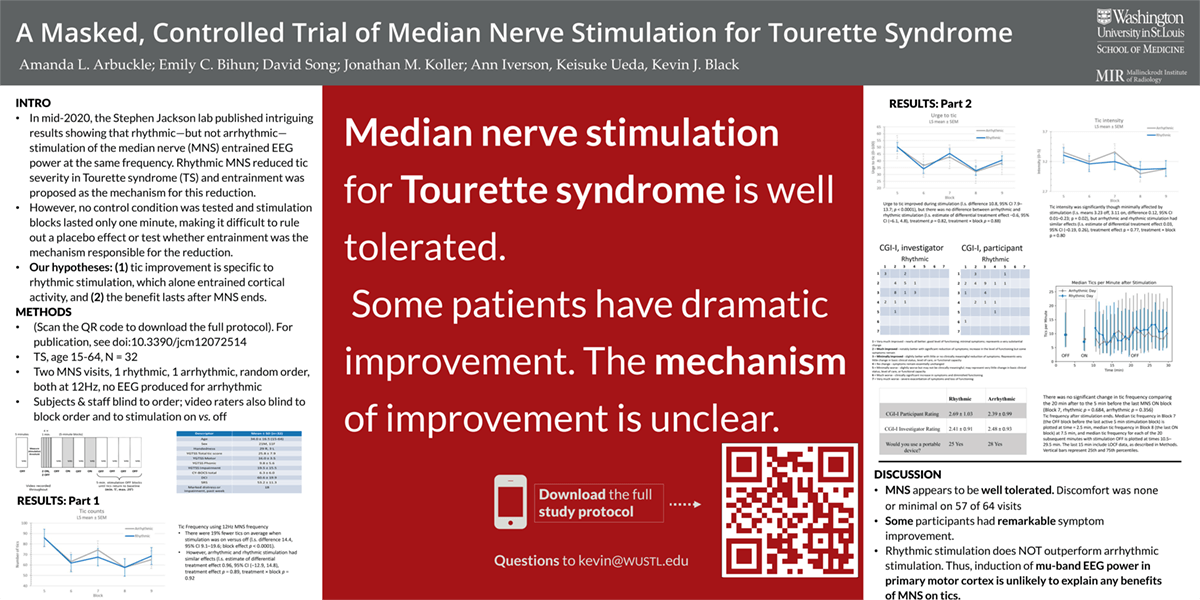
Introduction: A prior study showed that rhythmic, but not arrhythmic, 12 Hz stimulation of the median nerve (MNS) entrained the sensorimotor cortex EEG signal and found that 10 Hz MNS improved tics in Tourette syndrome (TS). However, no control condition was tested, and stimulation blocks lasted only 1 minute. We set out to replicate the TS results and to test whether tic improvement occurs by the proposed cortical entrainment mechanism. Preregistration was completed at ClinicalTrials.gov, under number NCT04731714.
Methods: Thirty-two people with TS, age 15-64, completed two study visits with repeated MNS on and off blocks in random order, one visit for rhythmic and one for arrhythmic MNS. Subjects and staff were blind to order; a video rater was additionally blind to stimulation and to the order of visits and blocks.
Results: Rhythmic MNS at 10 Hz improved tics. Both rhythmic and arrhythmic 12 Hz MNS improved tic frequency, intensity, and urges, but the two treatments did not differ significantly. Participant masking was effective, and there was no carryover effect. Several participants described a dramatic benefit. Discomfort was minimal. There was no evidence that the MNS benefit persisted after stimulation ended.
Impact: These results replicate the tic benefit from MNS but show that the EEG entrainment hypothesis cannot explain that benefit. Another electrophysiological mechanism may explain the benefit; alternatively, these data do not exclude a placebo effect.
Organization: Washington University in St. Louis
Arbuckle AL, Iverson AM, Ueda K, Song DY, Bihun EC, Koller JM, Wallendorf M, Black KJ